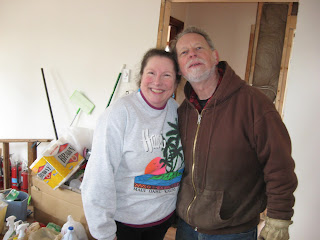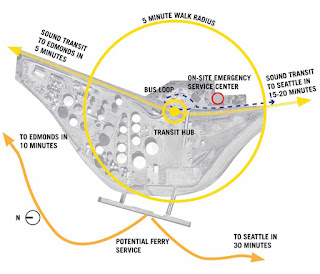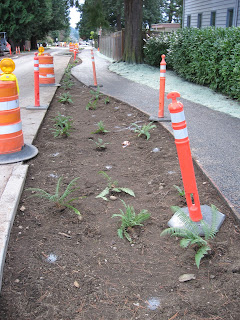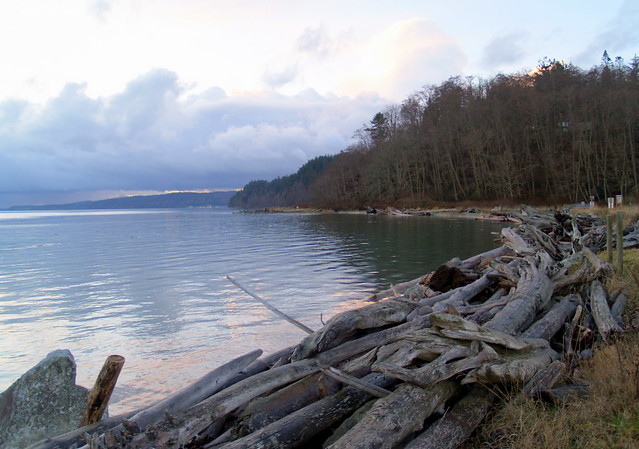The Salmon in the Classroom programs have been a fixture of our elementary school curriculum for a couple generations now in the Puget Sound region. Educators sought to instill the natural interest, curiosity of kids and environmental values by providing experiential learning opportunities.
The
"Salmon in the Classroom" projects have been a yearly event that created excitement and anticipation of fullfilling a worthwhile goal for students. Kids participated actively, by feeding, checking water temperature and doing the final salmon fry releases into local creeks.
In Seattle, the largest watershed is Thornton Creek. It is salmonid habitat, with at least five species of salmon - coho, chinook, sockeye, cutthroat and even steelhead. Salmon fry releases by students have been a fixture in Thornton Creek and several of the other largest watersheds in the City.
But now sadly, the programs may be coming to a halt due to budget worries and water quality concerns. Typically, the
UW School of Aquatic and Fishery Sciences hatchery has supplied teachers and classes, grades 1-6 with the eggs in carefully controlled programs.
 |
| "Eyed" salmon eggs from Issaquah Hatchery |
Every year 40,000 schoolchildren in WA State have been introduced and participated in the lives of salmon. But now,
WDFW (Washington Department of Fish and Wildlife) which manages the resource and which is facing the same drastic cuts every State Department faces, has had to eliminate the program as a result of the last special session of the Legislature.
According to an article in Seattle Times WDFW Program Manager Christy Vassar says,
"We are sorry to lose the program. Tens of thousands of young people learned about the natural world for the last 20 years, but these are extremely tough economic times, and all state agencies are required to cut back."
The funds had originally come from the federal government, but now the funds will have to be used elsewhere. The amount seems relatively small for a statewide program (my editorial judgement). Cutting the program will save $110,000 for this school year. It costs the schools nothing. Many of the schools have existing equipment which could still be used if it still functions if they were able to get the salmon eggs. But there is also another problem for the schools in the Thornton Creek Watershed such as Olympic Hills Elementary (in the Hamlin Creek Basin on Thornton Creek's North Branch).
According to those familiar with that local program, the Issaquah Hatchery has prohibited the classrooms in Seattle from releasing salmon (nor are they to receive the eggs for such a release) into Thornton Creek!
Thornton Creek and other urbanized watersheds have experience problems for spawning coho. There is a "pre-spawn mortality" problem which has been documented. This is likely due to stormwater runoff in these streams. The runoff is said to contain a toxic mix of sediments, petroleum based products and metals such as copper. The copper comes from brakepads from motor vehicles. The copper IS going to be phased out over the next few years, because a bill was passed last session to ban it within several years.
So, according to sources who know, the
Issaquah Hatchery has been able to now put the kiebash on salmon releases in Thornton Creek. It appears that there is actual discrimination going on against our urban streams and our urban classrooms in effect!
In our opinion (Of Paramount Importance), this is a very bad policy for so many reasons.
First of all it's clear that urban school children are now going to be denied the experiential learning that past generations received and a first hand knowledge about salmon streams. This is very wrong educationally and culturally.
Second of all, the $110,000 seems like a large amount of money, but spread across the entire state it was actual an incredible bargain to provide this educational benefit that instilled the value of salmon and their habitat in 40,000 school children. This is a colossal budget misjudgement. What other statewide program offers so much tangible and hands-on scientific understanding to so many children for so little?
Third, why does the
Issaquah Hatchery have jurisdiction over Seattle School Children and their families and over Seattle's largest watershed? This is where the taxpayers are in this state who provide the bulk of the tax dollars for Issaquah's watersheds. Seattle and Shoreline have been faithful participants in the
WRIA8 (Water Resource Inventory Assessment for the Cedar/Lake WA Watershed). And they have unselfishly provided funding to restore watersheds all throughout the basin, with little tangible benefit to our cities' watersheds, except for small programs like "
Salmon in the Classroom".
What can be done? Tell your legislators. Tell your City and County Councilmembers. Tell WDFW.
We have a voice and if we really still care about our salmon, and having a legacy for our kids and grandkids to remember what it was like to have salmon in our local streams, we can use our voices to make a difference!
Sure there are so many worthy programs being cut and this is just one more. But, it seems disproportionate to cut one of the few experiential programs that kids really get excited about, and one which actually costs so little.
Let's invest in our future. Invest in knowledge about the environment and our iconic salmon culture. How will kids really learn about salmon if they are only seen in history books?
Oh wait! They're also cutting back on history too. If it's not on the WASL........ forget it!
Just my 2 cents for salmon!
Janet










































